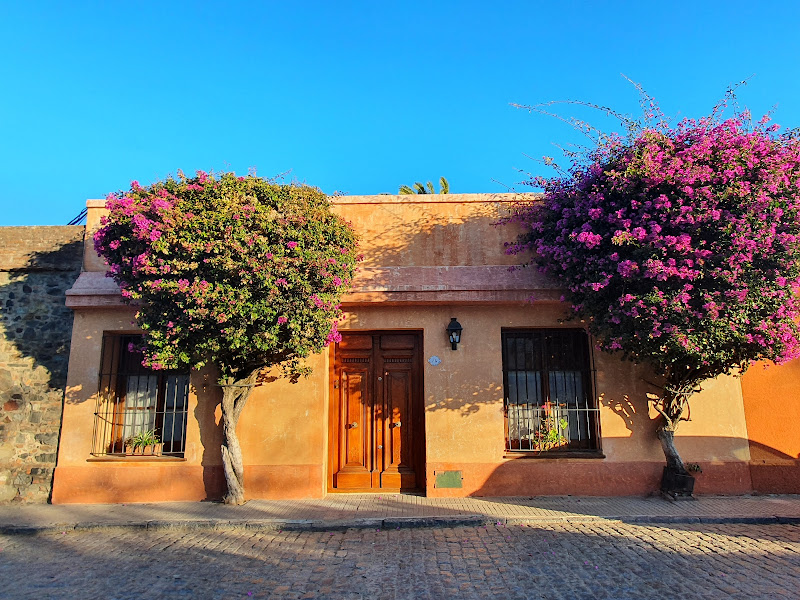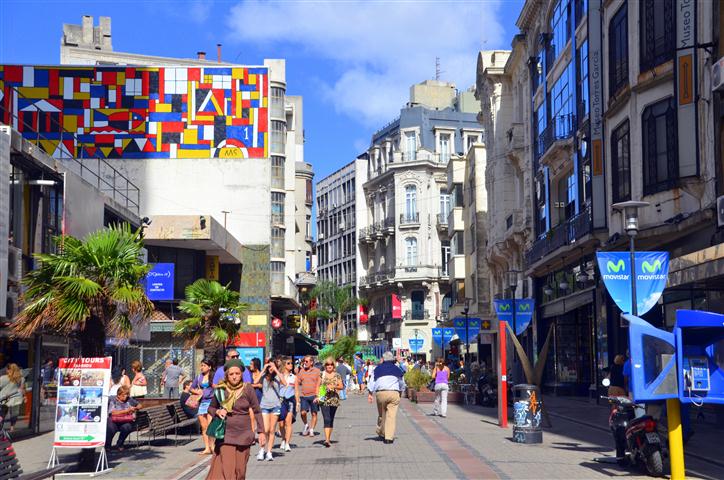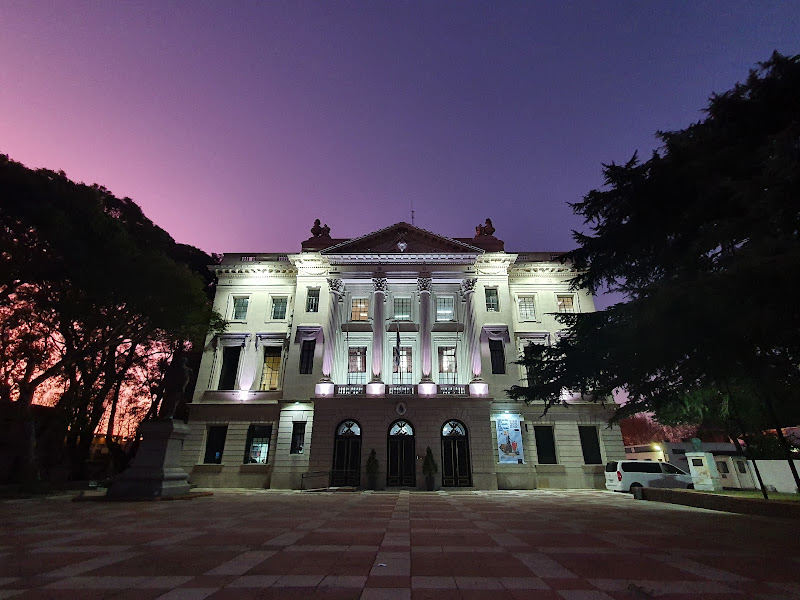A hidden jewel in South America, Uruguay provides a unique combination of breath-taking natural scenery, fascinating cultural activities, and a laid-back vibe. Montevideo, the nation’s capital, known for its vibrant markets, colonial-style buildings, and picturesque coastline along the Río de la Plata. The artistic character of the city embodied in the Ciudad Vieja district, which features bright street art and cobblestone streets.
Punta del Este, one of Uruguay’s most famous beaches, is immaculate. This glitzy beach city, with its golden sands, luxurious resorts, and exciting nightlife, draws both sun worshippers and foreign jet setters.
Colonia del Sacramento, a UNESCO World Heritage site, has lovely cobblestone lanes and well-preserved colonial structures that take tourists back in time. With a view of the Río de la Plata, the Barrio Histórico neighbourhood offers a fascinating peek into Uruguay’s colonial past.
Estancias dot Uruguay’s rural landscapes, offering visitors a taste of authentic gaucho lifestyle. In addition to delicious meals and horseback riding, these active ranches provide an insight into Uruguay’s ranching history.
Uruguay’s flourishing wine sector demonstrates the country’s dedication to sustainability. For those who love wine, the Carmelo wine region offers a lovely vacation with its charming vineyards and boutique wineries.
Uruguay welcomes guests to experience its distinct appeal and laid-back allure in every corner of this South American gem. Known for its friendly hospitality, varied landscapes, and balance of tradition and modernity. In this article, we will give you the best things to do and see in Uruguay when you visit the country.
Visit Montevideo
The energetic capital of Uruguay, Montevideo, combines culture, history, and a relaxed way of life on the banks of the Río de la Plata in a cohesive whole. Mile-long waterfront promenade The Rambla encapsulates the spirit of the city with its expansive views, vibrant markets, and recreational areas catering to both inhabitants and tourists.
The ancient neighborhood of Montevideo, known as Ciudad Vieja, is a quaint labyrinth of little alleyways, colonial buildings, and colorful street art. Important structures including the old Salvo Palace and the Solis Theatre surround the Plaza Independencia, the city’s central plaza.
The Mercado del Abasto, a bustling market with local goods and delights, and the Museo Torres García, which honors the works of renowned artist Joaquín Torres García, are two places where Montevideo’s cultural landscape comes to life.
The legendary Estadio Centenario is located in Montevideo, the heart of Uruguayan football. This iconic stadium, which hosted the first FIFA World Cup in 1930, is still a representation of the nation’s passion for football.
Montevideo is a city that begs investigation, whether it is by indulging in a typical Uruguayan BBQ, sipping mate in a park, or taking in the vibrant street scenes, diverse neighborhoods, and friendly environment. Montevideo perfectly captures the distinct charm and international vibe of Uruguay.
Beach Resorts in Uruguay
A variety of beach resorts in Uruguay, which is well-known for its immaculate Atlantic Ocean coastline, blend the natural beauty of the region with a carefree, laid-back vibe. Known as the “St. Tropez of South America,” Punta del Este is a well-known beach resort that draws vacationers from across the world. Punta del Este is a glitzy seaside getaway with golden sand beaches, luxurious resorts, and a bustling nightlife scene at the Brava and Mansa beaches.
La Barra, a hip coastal community close to Punta del Este, with a vibrant vibe, boutique beach resorts, and art galleries. It also has a bohemian character. The region is well-known for its colourful beach clubs and distinctive suspended bridge.
Beach access is more private at Jose Ignacio, a former charming fishing community that has been transformed into an exclusive resort. For those looking for seclusion and tranquilly, its immaculate beaches, little shops, and opulent beachside lodgings make it a sanctuary.
Sea lions and seals spotted in Cabo Polonio, a national park and off-the-beaten-path location that offers a distinctive beach experience surrounded by sand dunes and a rustic atmosphere.
These Uruguayan beach resorts accommodate a range of tastes, from the opulent and dazzling to the tranquil and isolated, guaranteeing that guests will find the ideal seaside retreat to decompress and take in the splendor of Uruguay’s coastal scenery.
Visit Fortress of Santa Teresa in Uruguay
Tales of Uruguay’s history preserved by the Fortress of Santa Teresa, which is situated close to the town of Castillos on the country’s north-eastern coast. The castle, which the Portuguese constructed in the late 1700s, was ideally situated to guard against future Spanish incursions and overlooked the Río de la Plata.
With strong stonewalls, watchtowers and a system of tunnels that were formerly used for storage and barracks, this well-preserved military building is impressive. Witnessing battles between European countries fighting for control of the lucrative regions along the Río de la Plata, the castle played a significant role in the history of the area.
The historical significance and scenic beauty of the Fortress of Santa Teresa have drawn visitors since it converted into a National Park. Sand dunes, verdant surroundings, and immaculate beaches may be found in the vast park that encircles the stronghold, providing a picturesque setting for exploring.
Wander through the fortress’s mediaeval halls, ascend the watchtowers for sweeping views, and explore exhibitions that teach visitors about Uruguay’s military past. The Fortress of Santa Teresa is a fascinating place that invites visitors to experience a step back in time and appreciate Uruguay’s cultural heritage because of its unique blend of historical charm and natural splendor.
Go to the Estadio Centenario in Uruguay
A particular place in the hearts of football fans everywhere is Estadio Centenario, a famous and historic football stadium situated in Montevideo, Uruguay. Built in 1930 to serve as the site of the FIFA World Cup, it represents the history and ardour of Uruguayan football.
The stadium’s architecture, which draws inspiration from Art Deco features, has a classic elegance about it. Estadio Centenario, which can hold more than 60,000 fans, was the site of historical events like as Uruguay’s 1930 World Cup victory, which made them the tournament’s first winners.
Estadio Centenario, designated a FIFA World Cup historical monument, has played host to several international matches, Copa America games, and important football events. During games, the atmosphere is electrifying as the cries of loyal supporters reverberate through its sacred grounds.
Stand on the same field as football heroes and tour the museum at Estadio Centenario, which features artefacts from the sport’s legendary past. In addition to serving as a site for athletic activities, the stadium is a living tribute to Uruguay’s invaluable contributions to world football culture. For football enthusiasts, Estadio Centenario is still a place of pilgrimage, commemorating Uruguay’s rich history with the beautiful game.
Visit the Colonia del Sacramento in Uruguay
Located in southwest Uruguay, Colonia del Sacramento is a quaint colonial village perched on the banks of the Río de la Plata and recognized as a UNESCO World Heritage site. The Portuguese founded Colonia, a location unlike any other, in 1680. Its historic sector displays an enthralling fusion of Portuguese and Spanish elements.
Colonia’s historic quarter, the Barrio Histórico, is home to colourful colonial houses, evocative plazas, and streets with cobblestones that meticulously conserved. There are expansive views of the town and river from the famous lighthouse and the remains of the San Francisco Convent.
Explore the Plaza Mayor, which is flanked by colonial buildings, and the Basílica del Santísimo Sacramento, one of the oldest churches in Uruguay. Calle de los Suspiros, often known as the Street of Sighs, is a charming alley renowned for its charming homes and enchanting atmosphere.
The Portón de Campo, the major entrance to the historic neighbourhood, is where Colonia’s maritime past brought to life. The Portuguese Museum and the Municipal Museum are two of the town’s museums that offer insights into its rich past.
For visitors looking to take a leisurely stroll through alleys replete with historical and cultural value and immerse themselves in Uruguay’s colonial past, Colonia del Sacramento is a lovely vacation due to its timeless beauty, historic charm, and laid-back atmosphere.
Go to the Mercado del Puerto in Uruguay
The lively and bustling Mercado del Puerto, which is situated in the center of Montevideo, Uruguay, embodies the spirit of the nation’s gastronomic and handicraft customs. This market, which dates back to the late 19th century, has developed into a center of culture, drawing both residents and tourists with its vibrant atmosphere.
Mercado del Puerto, which is distinguished by its unique wrought-iron building, is a culinary paradise where the alluring scent of grilled meats fills the air. Uruguay known for its asado, or traditional barbecue, which served at several parrillas, or grill restaurants, where diners can watch expert cooks prepare mouth-watering cuts of beef.
Tourists can taste a wide range of meats, including some of Uruguay’s most well-known cuts, such as picanha and entrecôte, while taking in the vibrant atmosphere created by street performers and local musicians. In addition, there are artist workshops within the market where artisans display their abilities in carving mate gourds, leatherwork, and other traditional Uruguayan crafts.
Apart from the delicious food, Mercado del Puerto boasts a lively arts and crafts market where guests can browse and buy one-of-a-kind handcrafted mementos. Enjoying a delicious barbecue or discovering handcrafted goods from the region, Mercado del Puerto offers a comprehensive look into Uruguay’s rich cultural past.
Festivals in Uruguay
The vibrant celebration of Uruguay’s rich cultural legacy through music, dance, and customs iembodied in its festivals. One of the biggest celebrations in the nation, funfair, takes center stage in February, turning places like Montevideo into a bustling funfair metropolis. During this festive season, elaborate parades, vibrant costumes, and upbeat music create an exhilarating environment.
Tacuarembó’s Fiesta de la Patria Gaucha honours the gaucho (cowboy) culture of Uruguay. This March festival offers a fascinating look into the country’s rural customs with its folk music, traditional dances, and rodeo competitions.
The Montevideo Tango Festival honors Uruguay’s ties to the fervent tango dance. Tango fans, musicians, and dancers get together to enjoy workshops, concerts, and the enticing rhythms of this legendary dance.
Uruguay is a nation that values musical diversity, as demonstrated by the Punta del Este International Jazz Festival. In this charming seaside environment, jazz fans from all over the world come to hear concerts by well-known musicians.
Among other things, these festivals demonstrate Uruguay’s dedication to maintaining its cultural identity and inviting guests to join in on the vibrant and varied festivities that embody the essence of the country.














